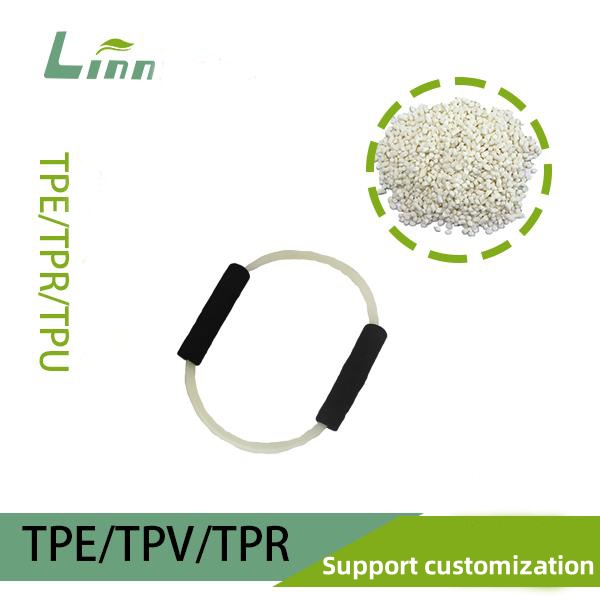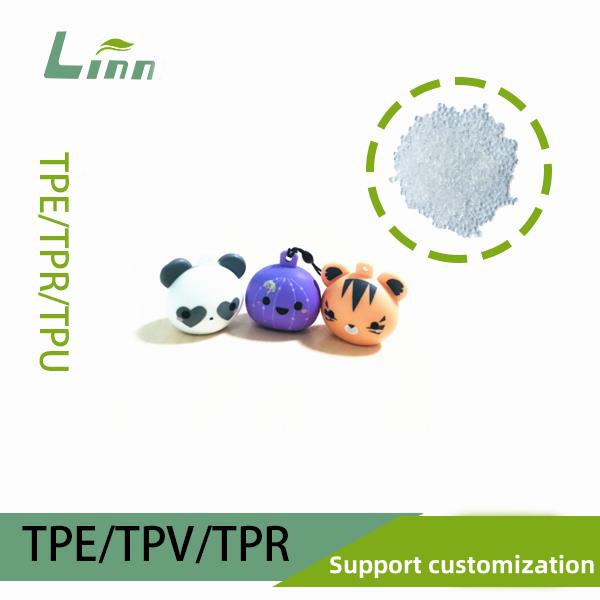Hey there! If you’re here, I’m guessing you’ve got a love-hate relationship with TPE (Thermoplastic Elastomer) right now. It’s soft, flexible, and perfect for so many things—phone cases, grips, you name it—but man, does it pick up dirt like a magnet! I’ve been working with TPE for over a decade, tweaking formulations and cleaning more smudges than I care to admit. Today, I’m spilling all my tricks to keep that TPE looking fresh and clean, no matter how grubby life gets. Let’s tackle this dirt problem together—grab a coffee, and let’s dive in!

Why Does TPE Get So Dirty?
First off, let’s figure out why TPE turns into a dust bunny’s best friend. I’ve spent years poking at this stuff, and it boils down to its nature. TPE is soft and slightly tacky—those same qualities that make it grippy and comfy also mean it loves to snag dirt, dust, and oils. Think of it like a sticky note: great for holding onto things, not so great when “things” include every speck of grime in the room.
I’ve noticed this especially with lighter colors—white or pastel TPE shows every smudge, while darker shades hide it better. But don’t worry, I’ve got fixes that work no matter the hue. Whether it’s a production issue or a post-use headache, I’ve been there, and I’ve got solutions.
How I Keep TPE Clean: My Go-To Strategies
Over the years, I’ve built up a toolbox of ways to deal with TPE’s dirt-loving tendencies. Here’s how I handle it, step-by-step, from the factory floor to the finished product.

Step 1: Pick the Right Formulation
Not all TPE is created equal. I’ve found that tweaking the material itself can cut down on dirt pickup. When I’m working with Linn’s TPE, I sometimes ask for a grade with extra slip agents—think of them as tiny shields that make the surface less sticky. A harder durometer (say, 60A instead of 40A) also helps; it’s less tacky and shrugs off grime better.
Chat with your supplier. I’ve had Linn whip up custom batches with a bit more silicone additive—works wonders.
Test small runs first. I’ve learned the hard way that a big order of soft, sticky TPE is a cleaning nightmare.
Step 2: Add a Protective Coating
One of my favorite hacks is slapping a thin coating on the TPE after molding. A UV-cured polyurethane topcoat—about 10-20 microns thick—creates a slick barrier that dirt slides right off. I’ve used this on grips and mats, and the difference is night and day.
Apply it post-production with a spray or dip. I’ve got a little spray booth setup that does the trick.
Check for compatibility—some coatings can mess with TPE’s flexibility, so I always test a sample.

Step 3: Clean During Production
Dirt doesn’t wait till the end to show up—it starts in the factory. I keep my molds and machines spotless to avoid embedding grime in the TPE from the get-go. A quick wipe with isopropyl alcohol (70% IPA) between runs keeps things pristine.
Use lint-free cloths. I’ve had fuzzy rags leave more mess than they cleaned!
Watch for oil residue from machines—degrease screws and barrels regularly.
Step 4: Design Smarter Products
Sometimes it’s about outsmarting the dirt. I’ve designed parts with textured surfaces—tiny ridges or patterns—that hide smudges better than a smooth finish. For a phone case I worked on, I added a subtle grid pattern, and customers barely noticed the dirt that used to drive them nuts.
Avoid flat, glossy surfaces if you can. Matte or textured finishes are my go-to.
Darker colors like black or navy are dirt’s worst enemy—I lean toward those when possible.

Step 5: Teach Users How to Clean It
Once the TPE’s in the wild, it’s up to the end user. I include care tips with my products: a mix of mild soap and water, wiped with a soft cloth, does wonders. For stubborn spots, a dab of rubbing alcohol works—no harsh solvents, though, or you’ll degrade the material.
Tell users to avoid abrasive scrubbers. I’ve seen TPE get scratched to death by overzealous cleaning.
Suggest regular wipes—once a week keeps it looking new.
Cleaning Methods That Actually Work
Here’s a quick table I’ve put together from my trial-and-error days. These are my tried-and-true ways to clean TPE without ruining it.
| Method | How-To | Pros | Cons |
|---|---|---|---|
| Soap and Water | Mix mild soap with warm water, wipe with a soft cloth | Gentle, cheap | Slow for tough stains |
| Isopropyl Alcohol | Dab 70% IPA on a cloth, rub gently | Fast, kills germs | Can dry out TPE if overused |
| Baking Soda Paste | Mix baking soda with water, scrub lightly | Lifts deep dirt | Risk of scratches |
| Microfiber Cloth | Dry wipe or damp with water | No chemicals needed | Less effective on oils |
My Dirt Disaster Story
Let me take you back to one of my messiest TPE moments. I was molding white TPE handles for a client—soft, grippy, perfect… until they hit the warehouse. Within a week, they looked like they’d been dragged through a coal mine. Dust, fingerprints, you name it. I panicked, tried scrubbing with everything—solvents, brushes—until I realized I was making it worse. Finally, I coated a test batch with a PU layer, and boom—problem solved. That job taught me to think ahead about dirt, not just react to it.
Why Some TPE Stays Cleaner Than Others
I’ve dug into this with suppliers and chemists over beers after work. TPE’s dirt magnet status ties back to its surface energy—soft grades have more “grab” than harder ones. Additives like slip agents or anti-static compounds can dial that back. Linn’s TPE, for example, often comes with a decent baseline of these helpers, but I’ve still tweaked it for extra dirt resistance on tricky projects.
For proof, check out this study on polymer surface properties—it’s nerdy, but it backs up why tackiness and dirt go hand in hand.

Prevention Beats Cure Every Time
I’ve learned that stopping dirt before it sticks is way easier than cleaning it off later. Here’s what I do:
Dust-Free Storage: I keep finished TPE parts in sealed bags or bins. One dusty shelf can undo a whole run.
Anti-Static Treatment: A quick spray of anti-static solution (diluted, about 1:10) cuts down on dust cling. I’ve used this on mats and it’s a game-changer.
Packaging: I wrap products in protective film—keeps them clean till they’re in the user’s hands.
How Long Can You Keep TPE Clean?
Real talk: TPE won’t stay spotless forever, especially in high-use settings. But with the right prep, I’ve seen Linn’s TPE hold up for 6-12 months before needing a wipe-down. Compare that to untreated stuff that’s grimy in weeks, and you see the payoff. Regular care stretches that even further—my gym mats are going on two years and still look decent.

Cost of Keeping TPE Clean
Worried about the budget? Here’s a rough breakdown from my projects:
| Solution | Cost (USD) | Notes |
|---|---|---|
| Slip Agent Additives | $50-100 per batch | Depends on volume—worth it |
| PU Coating | $200-500 per run | Equipment cost if you DIY |
| Cleaning Supplies | $10-20 monthly | Soap, IPA, cloths—cheap |
| Anti-Static Spray | $15-30 per can | One can lasts a while |
Small tweaks like these don’t break the bank but save a ton of hassle.
Common Mistakes I’ve Made
I’ve flubbed this enough to know what not to do:
Using harsh chemicals: Bleach or acetone eats TPE alive. Stick to gentle stuff.
Ignoring color choice: White TPE is a dirt beacon—I’ve switched to darker tones since.
Skipping coatings: Thought I’d save time once. Ended up with a filthy batch and a grumpy client.
Over-scrubbing: Tore up a surface with a rough sponge—lesson learned.

Final Thoughts
Dealing with TPE’s dirt problem isn’t rocket science, but it does take some know-how and a bit of elbow grease. I’ve wrestled with smudges and stains more times than I can count, and every time, I’ve come out with a cleaner, smarter approach. Whether it’s tweaking the material, coating it up, or just keeping a rag handy, you can make TPE work for you—not against you. I’m rooting for you to get that pristine finish—let me know how it goes!
Q&A: Your Dirt Dilemmas Answered
Q: Can I make TPE completely dirt-proof?
A: Not 100%, but close. I’ve gotten it darn near with coatings and smart design—good enough for most folks.
Q: Does dirt affect TPE’s performance?
A: Not really, unless it’s caked on thick. I’ve tested dirty grips—still grippy, just uglier.
Q: How often should I clean TPE products?
A: Depends on use. Weekly for heavy traffic, monthly for light stuff. I wipe my mats every couple of weeks.
Q: Is Linn’s TPE less dirty than others?
A: It’s got a solid base formulation—less tacky out of the gate. I’ve had good luck with it compared to some stickier stuff I’ve tried.
There you have it—my full rundown on keeping TPE from turning into a dirt trap. Got a grimy TPE tale or a trick I missed? Drop it below—I’d love to swap stories. Happy cleaning!
